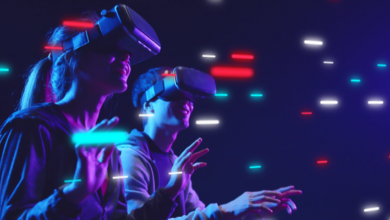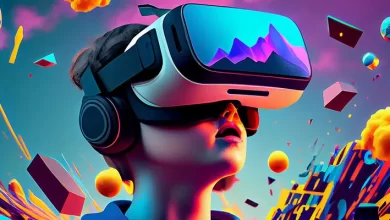How Experiential Marketing Will Evolve in 2022 & Beyond

In the years leading up to the pandemic, experiential marketing was a trend that was quickly gaining momentum.
Consumers were enjoying these unique events and brands were reaping the benefits of increased awareness and loyalty. All of that came to a screeching halt, however, once COVID-19 entered the picture.
Since then, brands have been getting creative with their experiential marketing endeavors. Thanks to technological advances, in-person experiences can be offered online. Now that marketers know how well these newfound capabilities work, virtual and hybrid experiences aren’t likely to go anywhere anytime soon, even with the possibility of a return to “normal” on the horizon.
Here’s what you can expect from experiential marketing in 2022 and beyond!
Using Advanced AR Technology Will Become a Must for Retailers
Augmented reality, or AR for short, is a form of experiential marketing that makes it possible for consumers to interact with products or services in a much more fun and personalized way.
Brands were already beginning to incorporate augmented reality into their marketing strategies pre-pandemic, but lockdowns and social distancing measures sped this process up.
With AR technology, brands are able to show their customers what makes their product or service great instead of just telling them. This enables brands to better connect with their customers, provide them with memorable experiences, and reduce costly returns.
AR technology also makes any concerns about hygiene and cleanliness obsolete because customers can shop from the comfort of their own homes!
One brand that has experienced great success with its augmented reality marketing strategy is Sephora. Using facial recognition, Sephora has made it possible for consumers to try on makeup products virtually before they buy them in-store with their Virtual Artist App. This tries before you buy experience is also popular amongst furniture stores.
Home Depot, Lowe’s, and Ikea all have AI technology built into their apps that let consumers see how different paint colors and/or furniture items will look in their homes before they buy them.
Going forward, brands will need to adopt augmented reality shopping capabilities in order to keep up with changing consumer needs. If they don’t, they will risk getting left behind.
Hybrid Events Are Here to Stay
When the pandemic hit, in-person events were forced to create new channels of revenue and embrace platforms like Instagram Live, TikTok, Twitch, and Zoom. The music industry, in particular, had to drastically transform concert experiences. Thankfully, they were able to successfully make that transition.
Live performances from major artists like Justin Bieber and the Weeknd on TikTok, Swizz Beatz and Timbaland’s 5-hour “producer clash” on Instagram Live, and the Wacken World Wide live stream were all huge hits!
Many organizations that took their in-person events online were either able to significantly reduce the cost of their tickets or make the event completely free. With no upfront costs and no geographical boundaries, this opened up their experiences to a much larger audience. This undoubtedly had a positive effect on brands that were able to expand their reach.
Since safety concerns are something that will be part of our lives for a long time, giving people the option to attend an event virtually or in-person will greatly benefit brands. Now that we know how effective larger-scale virtual events can be, a hybrid approach that continues to cater to virtual attendees will likely be adopted for the foreseeable future!
Meeting Audiences Where They Are
Over the course of the pandemic, consumer behavior drastically changed. One area of our lives that saw a huge spike as we all hunkered down at home was gaming usage and viewership. Brands took notice of this and leveraged popular platforms like Fortnite and League of Legends to host virtual events. Travis Scott even ended up holding an extremely successful Fortnite concert!
Not only was leveraging these platforms an ingenious idea in terms of meeting audiences where they are, but it’s also a great way to facilitate virtual interactions and start conversations with consumers.
Live chats and polling are also great ways to connect with virtual attendees, and brands will probably continue to embrace these tactics along with popular gaming platforms.
The COVID-19 pandemic has forever changed the way we live. Our “return to normal” will not be a linear path, and many people will be hesitant to attend in-person events for a while. Thankfully, we’ve learned how amazing tech can be when it comes to experiential marketing.
With top companies like Facebook embracing live-stream shopping events and Walmart leveraging AR technology to create a new virtual try-on feature, the future of experiential marketing has arrived quicker than any of us could’ve predicted. Despite the impact that the pandemic initially had on experiential marketing, it is still an integral component of the marketing mix and will likely become increasingly important in the years to come.
Read the full article here







